#Largest Egg in Animal Kingdom.
Explore tagged Tumblr posts
Video
youtube
Majestic Ostrich Special Facts , Flightless Bird , Planet Earth Aquari...
#youtube#Birds#Ostrich#Flightless Bird#Largest Bird#Tallest Bird#Largest Egg in Animal Kingdom.#Planet Eath aquarium and Pets Park Mysore#Fast Runner#Long Necks#Black Feathers#Small Head
0 notes
Text
Round 2.5 - Cnidaria - Hexacorallia
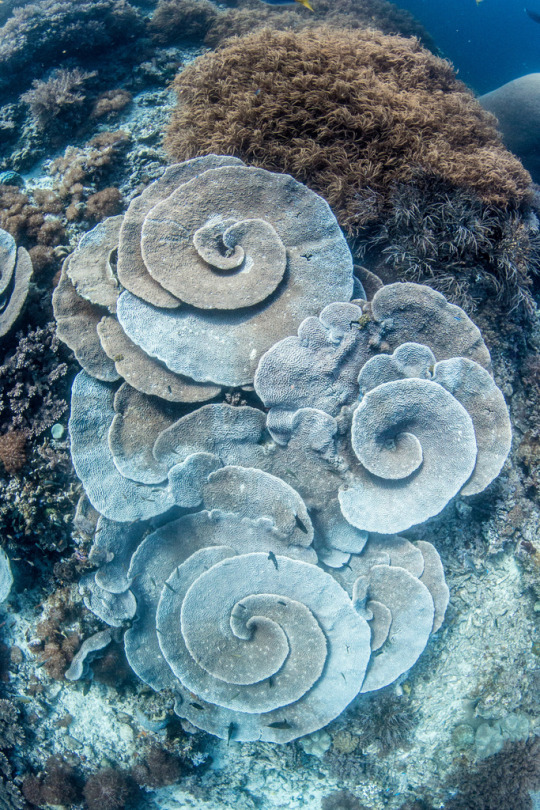
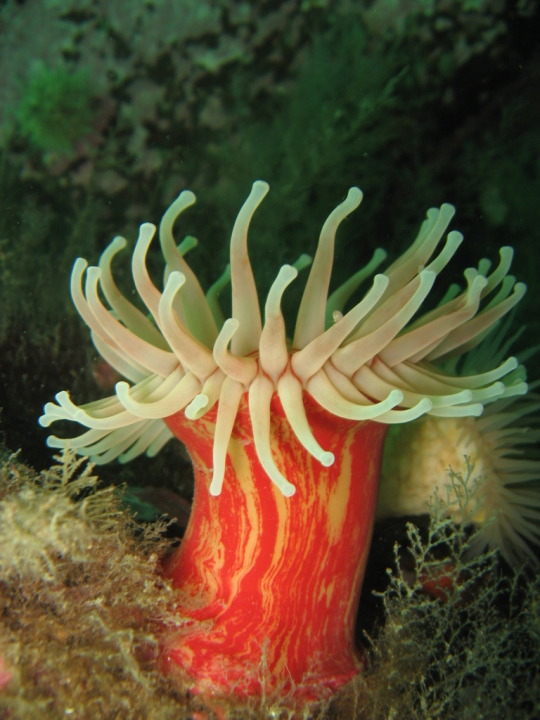
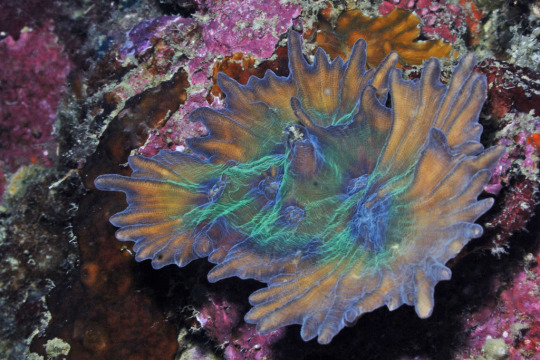

(Sources - 1, 2, 3, 4)
The anthozoan class Hexacorallia contains five extant (living) orders: Actiniaria (“sea anemones”), Antipatharia (“black corals” or “thorn corals”), Corallimorpharia (“false corals”), Scleractinia (“stony corals” or ��hard corals”), and Zoantharia (“zoanthids”). This class contains many of the most important reef builders: the stony corals, sea anemones, and zoanthids.
Like all anthozoans, these organisms are formed of individual soft polyps which in some species live in colonies and can secrete a calcite skeleton. Some species live as solitary polyps. Hexacorals are distinguished from Octocorals by having six or fewer axes of symmetry in their body structure, and tentacles which are simple and unbranched and normally number more than eight. Reef-building or hermatypic corals are mostly colonial, building a communal skeleton around their colony. Corallimorphs are similar to the stony corals, except for the stony skeleton, and have a tendency to overgrow reefs in a carpet formation. Most sea anemones are solitary, single polyps attached to a hard surface by their base but some species float near the surface, or can deatach to escape predators.
Hexacorals are filter-feeding carnivores, using their tentacles armed with stinging cells, called cnidocytes, to catch and neutralize plankton and draw it into their mouth. Larger polyps are able to take correspondingly larger prey, including various invertebrates and even fish. Many species have separate sexes, the whole colony being either male or female, but others are hermaphroditic, with individual polyps having both male and female gonads. Most species release gametes into the sea where fertilisation takes place, and the planula larvae drift as plankton, but a few species brood their eggs. Once the larvae settle in an area, they will metamorphize into a polyp. In colonial species, this initial polyp will repeatedly divide to give rise to an entire colony. Hexacorals can also reproduce by fragmentation, where part of a colony becomes detached and reattaches elsewhere, cloning polyps to grow the colony in the new area.
Hexacorals have existed since the Fortunian. Mackenzia, from the Middle Cambrian Burgess Shale of Canada, is the oldest fossil identified as a sea anemone. Nonetheless, many hexacorals have been declining in numbers and are expected to continue declining due to poaching, ocean acidification and climate change.

Propaganda under the cut:
Hexacorals provide housing, shelter, food, and protection for so many other animals. They are The Givers of the Animal Kingdom.
The largest coral ever recorded, a Pavona clavus colony dubbed the “mega coral” lives off the Solomon Islands. It is 34m (112 ft )wide, 32m (105 ft) long and 4.9m (16 ft) high, larger than a Blue Whale, composed of nearly one billion polyps, and more than 300 years old!
Coral is loud. It can hear and it communicates with each other via sound. We’re only beginning to discover this information and understand the implications of it, and more research needs to be done, but the amount of noise-making humans do in the ocean tends to disrupt the communication corals have with each other and other reef life.
Black Corals have historically been used by Pacific Islanders for medical treatment and in rituals, and are used in modern day for making jewelry.
Sea anemones and zoanthids are popular in the aquarium trade, however, their popularity threatens some populations as the trade depends on collection from the wild.
In southwestern Spain and Sardinia, the Snakelocks Anemone (Anemonia viridis) is consumed as a delicacy. The whole animal is marinated in vinegar, then coated in a batter similar to that used to make calamari, and deep-fried in olive oil.
Most sea anemones are harmless to humans, but a few highly toxic species (notably Actinodendron arboreum, Phyllodiscus semoni and Stichodactyla spp.) have caused severe injuries and are potentially lethal.
Clownfish and Anemonefish (Subfamily Amphiprioninae) are most famous for having a mutualistic relationship with sea anemones, receiving protection from predators by hiding in the anemone's stinging tentacles, and providing the anemone nutrients in the form of faeces. Some other animals have been recorded utilizing sea anemones in a similar way, including cardinalfish, juvenile threespot dascyllus, incognito (or anemone) gobies, juvenile painted greenlings, various crabs (such as Inachus phalangium, Mithraculus cinctimanus and Neopetrolisthes), shrimp (such as certain Alpheus, Lebbeus, Periclimenes and Thor), opossum shrimp (such as Heteromysis and Leptomysis), and various marine snails. One of the more unusual relationships are those between certain anemones (such as Adamsia, Calliactis and Neoaiptasia) and hermit crabs or snails, where the anemones live on the shell of the hermit crab or snail, providing protection from predators while being provided with transportation. Another unusual relationship is between Bundeopsis or Triactis anemones and Lybia boxing crabs, where the small anemones are actually carried around in the claws of the boxing crab as little weapons.
Look at this anemone eating an entire Mola:
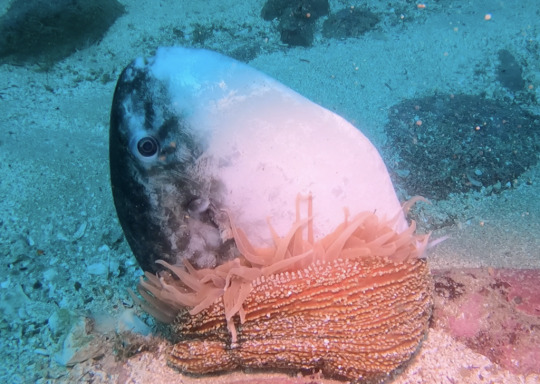
(source)
75 notes
·
View notes
Text
reading about barnacle anatomy this morning blew my mind

Anatomy and physiology
Barnacles have a carapace made of six hard calcareous plates, with a lid or operculum made of four more plates. Inside the carapace, the animal lies on its stomach, projecting its limbs downwards. Segmentation is usually indistinct; the body is more or less evenly divided between the head and thorax, with little or no abdomen. Adult barnacles have few appendages on their heads, with only a single, vestigial pair of antennae attached to the cement gland. The six pairs of thoracic limbs are called cirri; these are feathery and very long. The cirri extend to filter food, such as plankton, from the water and move it towards the mouth.[8]

Acorn barnacles are attached to the substratum by cement glands that form the base of the first pair of antennae; in effect, the animal is fixed upside down by means of its forehead. In some barnacles, the cement glands are fixed to a long, muscular stalk, but in most they are part of a flat membrane or calcified plate. These glands secrete a type of natural quick cement made of complex protein bonds (polyproteins) and other trace components like calcium.[9]: 2–3 This natural cement can withstand a pulling strength of 5,000 lbf/in2 (30,000 kPa) and a sticking strength of 22–60 lbf/in2 (200–400 kPa).[8]
Barnacles have no true heart, although a sinus close to the esophagus performs a similar function, with blood being pumped through it by a series of muscles.[10] The blood vascular system is minimal.[11] Similarly, they have no gills, absorbing oxygen from the water through the cirri and the surface of the body.[12] The excretory organs of barnacles are maxillary glands.[13]
The main sense of barnacles appears to be touch, with the hairs on the limbs being especially sensitive. The adult has three photoreceptors (ocelli), one median and two lateral. These record the stimulus for the barnacle shadow reflex, where a sudden decrease in light causes cessation of the fishing rhythm and closing of the opercular plates.[14] The photoreceptors are likely only capable of sensing the difference between light and dark.[15] This eye is derived from the primary naupliar eye.[16]
Sexual reproduction

Most barnacles are hermaphroditic, producing both eggs and sperms. A few species have separate sexes, or have both males and hermaphrodites. The ovaries are located in the base or stalk, and may extend into the mantle, while the testes are towards the back of the head, often extending into the thorax. Typically, recently moulted hermaphroditic individuals are receptive as females. Self-fertilization, although theoretically possible, has been experimentally shown to be rare in barnacles.[26][27]
The sessile lifestyle of acorn barnacles makes sexual reproduction difficult, as they cannot leave their shells to mate. To facilitate genetic transfer between isolated individuals, barnacles have extraordinarily long penises. Barnacles probably have the largest penis-to-body size ratio of the animal kingdom,[26] up to eight times their body length, though on exposed coasts the penis is shorter and thicker.[25] The mating of acorn barnacles is described as pseudocopulation.[24][28]
The goose barnacle Pollicipes polymerus can alternatively reproduce by spermcasting, in which the male barnacle releases his sperm into the water, to be taken up by females. Isolated individuals always made use of spermcasting and sperm capture, as did a quarter of individuals with a close neighbour. This 2013 discovery overturned the long-held belief that barnacles were limited to pseucocopulation or hermaphroditism.[24]
Rhizocephalan barnacles had been considered hermaphroditic, but their males inject themselves into females' bodies, degrading to little more than sperm-producing cells.
#this is the craziest shit i've read in a long time#i yelled multiple times#these guys are lowkey the biggest freaks (complimentary) in the animal kingdom#out here having alien hermaphroditic sex with their giant dongs#injecting themselves into partners and then degrading into sperm cells#this is so... i need to lie down
12 notes
·
View notes
Text
“[David] Abram writes, ‘The eyes, the skin, the tongue, ears, and nostrils—all are gates where our body receives the nourishment of otherness…. For the largest part of our species’ existence, humans have negotiated relationships with every aspect of the sensuous surroundings, exchanging possibilities with every flapping form, with each textured surface and shivering entity that we happened to focus on.' It pleases me greatly to find 'every flapping form' within this quotation. In my years as a teacher of neurodivergent students, I have encountered many flapping forms...
Abram is right to emphasize 'focus.' In an age that is increasingly out-of-focus or focused more and more on tiny screens overflowing with human news, our ability to encounter a lived experience of otherness—a muskrat surfacing near the storm drain, the pallor of leaves sickened by a rust fungus, a miniscule monarch egg clinging to the underside of a milkweed leaf—dwindles and so does our ability to understand ourselves. Abram goes on to write: 'we are human only in contact, and conviviality, with what is not human.' [..]
Autistic thinkers habitually see and hear with an environmental bandwidth that dwarfs their neurotypical counterparts. They perceive widely, warmly, and with an earnest curiosity that treats the more-than-human world as a phenomenal network to be engaged, not a menu of resources to be exploited. And though many autistic thinkers like Grandin are fascinated with mammals, their attention doesn’t end there. It doesn’t limit itself to the kingdoms of animalia or plantae either. Meghana has written to me of her argumentative gut flora and the rousing inner life of rocks. When Tito Mukhopadhyay writes about miners trapped underground, he finds himself fretting over the oxygen molecules themselves. Adam Wolfond thinks endlessly about the endlessly variable movement of water and the grounding of sticks, wielding his body like a blood-filled dowsing rod to maneuver through the more-than-human world. Where others perceive nothing but a mute backdrop to their busy human affairs, these autistic thinkers comprehend a bustling chorus of more-than-human voices accompanied by a dense dance of more-than-human forms.
Simply put, they find meaning in the environment. And without this particular form of meaning, suffused with 'the nourishment of otherness,' our understanding of what it means to be human becomes increasingly flattened under our surface obsession with human affairs. It’s a paradox of the contemporary world: we have grown so adept at studying ourselves that we have forgotten who we are…Language, in small and subtle ways, can nourish our understanding of otherness, loosening the binds of the 'real world' to better enter the deeper animal ecosystem of thinking beneath it." Chris Martin "The Listening World"
12 notes
·
View notes
Text
[Wings of Fire] MudWing Headcanons
Me when I finally use Tumblr for something 🤯. I'm working on tribe headcanons and am going to start posting them here. I have lists for all of the tribes but we'll start with MudWings (they're in tribe guide order).
MudWings have the most complex structures and they are very skilled at construction, especially masonry.
MudWings are the largest tribe in population due to having the largest egg clutches. These clutches range from 5-9 dragonets per laying.
When the tribes started adapting to their environments and evolving into the tribes that exist today, the MudWings were the last to be formed.
Blood-red eggs occur about once for every 8 clutches. It is most common for the bigwings to hatch from a blood-red egg.
MudWings have a stronger immune system due to living in a swamp environment their whole lives and being exposed to these diseases, gaining immunity to them over time. If a MudWing, such as Clay, is hatched out of the swamp, they lack this immunity.
MudWings are the only tribe where mating for life is rarely seen. Higher-class MudWings are the only MudWings known to sometimes stay with their mates.
The MudWing social structure is shown by how the kingdom is arranged. The lower-class MudWings live on the outer edges of the kingdom while the higher-class MudWings live around the palace which is in the center of the kingdom.
MudWings are commonly aromantic or demiromantic. It's rare to find an actual relationship between two MudWings.
The Royal MudWing Family is the only family well-known for keeping track of their biological dragonets.
The MudWing Royal Family is represented by rubies.
Despite MudWings being hungry is always seen as a joke, it is extremely important that MudWings eat enough food because of how much energy they need due to their larger bodies.
Common MudWing professions include farmer, stonemason, medic, hunter, shopkeeper, and rancher.
Traditional MudWing music is played with banjos, fiddles, harmonicas, jugs, kazoos, washboards, and rhythmic clapping, stomping, or thudding. The music is similar to that of stereotypical hoedown music from old-time eastern America.
MudWings have large horns that they use for ramming. These horns either twist outward and upward (bull), or downward (ram).
MudWings often have patterns similar to that of swamp animals. This can include speckles, spots, feathery markings, and zig-zags.
172 notes
·
View notes
Text
MORION
Illustrations by @tururv
Editor and translator by Swissy Knife
Morion is the largest kingdom on the continent, whose core calling is combat. It was formed as a result of faith in the gods of destruction, Pyrope and Ruben. According to legends, the Morionians got their bright red eyes from the goddess of hunting herself.
Since its formation, Morion has been a closed kingdom, and opened its borders only after the end of the last war. Escapes from Morion have long been quite frequent, despite being punishable by law in this Northern kingdom. Those who manage to commit this betrayal act become enemies of the nation and are never allowed to return to their homeland, it is believed.

Due to the harsh climate, agriculture is not well developed in Morion. Morionians are mainly engaged in hunting and extracting animal skins from their rich forests. This place is known as a stronghold for excellent hunters who can defeat anyone, whether it's a ferocious beast or an unfortunate victim.
Every Morionian is sent to the army at the age of 75 regardless of gender, and the service lasts for 50 years.
The mountains of Morion are rich in minerals, including a wide variety of precious stones. Because of this, blacksmithing and jewelry making are well developed in the kingdom. Despite the fact that Morion just recently opened its borders, it is a well known fact that the best jewelry on the entire continent is made here. It's no secret that their jewelry carries special powers within itself.
In the Northern lands, you can often see many wooden totems that protect local villages and sacred places. Morionians are worshipful about woodcarving, believing that it is precisely because of the durability of wood that the deities are able to grant them safety, and they, in turn, honor them with their wooden images in that way. In many families, wood carving is considered as a traditional craft that passed down from generation to generation. Many amulets and wooden toys decorate the houses of people of the North.
The Nation
Due to the fact that Morion has been closed to outsiders since its foundation, its people considered themselves superior to the rest of the Ellilians. The Morionians treat outsiders with disdain and disapprove of any contact with other people of the continent. Any intimacy with a representative of another nation was unacceptable and socially punishable for them, and any children who appeared as a result of such unions were disposed of at the egg stage.
There are small communities on the lands of Morion that have settled away from towns and villages. Some of them lead a barbaric lifestyle and attack civilians of the North. They worship their own deities and perform rituals that are unacceptable to both the civilized Morionians and the Ellilians in general. They are no strangers to sacrifice, cannibalism, mass murder and other practices that are considered inexcusable. And although the kingdom is trying to deal with this centuries-old problem, the barbarians are still a huge issue for Morion.
Morion's families are often patriarchal. However, there is a common wedding tradition in which a couple must fight for dominance in their future family. In some villages and communities, there is also a tradition of stealing brides and fiances.
Any trait that is not typical of the original image of a race frightens Morionians. Hatching a white-haired child is a rare phenomenon, interpreted as a curse and misfortune for the entire family. For this reason, the Morionians have a dubious attitude toward the newly-made wife of King Norman, Queen Justine. It is unknown which nation the woman belongs to, but it is surely not acceptable to spread rumors or openly discuss such delicate matters — there is a high chance of becoming a traitor of a nation and losing one's head.
Morion and Sunstone have been allies since the ancient times of Ellil. The history of their origin union is unknown, but when new rulers ascended the throne, these kingdoms repeatedly swore oaths of loyalty to both of their nations' rulers. This alliance obliged them to help each other in times of wars. As part of this agreement, Sunstone sent its best healers to Morion. These healers are considered untouchable in the Northlands, and anyone who dares to harm them will be punished.
Religion
Faith in Morion flows in multiple directions. Most people in the North believe in their current king, while some are more keen on the faith of the Destruction gods. There are also pagan cults that worship local deities in barbarian communities.
#ellilverse#visual novel#game development#oc#fantasy#original character#oc lore#indie otome#indie games#amare game#amare#renpy visual novel#renpy game#renpy#otome#fantasy character#elf#world building#vndev#vn
6 notes
·
View notes
Text

Pushantan/Rotlen
Kingdom: Animalia
Phylum: Chordata
Subphylum: Vertebrata
Infraphylum: Gnathostomata
Clade: Placodermi
Clade: Antiarchi
Clade: Euantiarcha
Clade: Xenodontimorpha
Class: Xenodontida
Order: Prenocaudata
Family: Phrynorhynchidae
Genus: Phrynorhynchus
Speices: P. apintajara (“toad beak of Apintajara" [/apiⁿtəd͡ʒarə/, a shapeshifting demon in the local folklore])
Ancestral species: possibly Bothriolepis ornata
Temporal range: late Miocene to recent (6.5 mya - present)
Information:
Though this creature may look cute and innocent on the exterior, do not let that fool you, as P. apintajara is actually a highly-aggressive predator. A monstrous, terrestrial antiarch-derived placoderm competing with the likes of theropods and pseudosuchians for the niche of apex predator, this creature is exceptionally territorial and does not readily tolerate other large predators, readily attacking on sight and regularly destroying the eggs and nests of other large predators if it comes across them. Lightweight in build, this creature is limber, flexible, and quick on its toes, able to run down prey which would tire out similarly-sized theropods with ease. The second-largest largest member of its clade, the xenodonts or xenodontians (class Xenodontida, “strange teeth” in reference to the sharpened bony plates in its mouth) and the only obligate carnivore within it, this creature’s bony mouth plates can shred through bone like a cleaver and pierce the armor of even some of the most well-defended herbivores. Primarily a sound-based predator, this creature’s eyesight is actually relatively poor, instead using its peculiarly-shaped gill-like pinna to help locate the point of origin for sounds in its environment and pinpoint prey in the dense thicket. In fact, this species’ hearing is superb, able to hear infrasonic frequencies across long distance.
To aid in blending in with its surroundings, the pushantan has two distinct color morphs, one found in the far northern jungles and lush alpine forests it prefers and the other in the northern dry forest regions it sparsely inhabits. The former tends to have a green and gray body with black bands and stripes on its legs and a lime green throat pouch with black highlights while the latter tends to have orange backs with yellow flanks and a red throat pouch but still the same black bands and stripes. Though it prefers inland forest ecosystems, coastal populations are a notable phenomenon, in part due to the lack of competition from other large littoral zone terrestrial predators. Specializing in hunting land-dwelling prey, its long legs also make it adept as an intertidal predator, wading in the shallows for large fish and other creatures to swim by before striking. Typically occupying an area of a couple hundred square miles, it has been known to migrate long distances in search of food, sometimes up to 50 miles in a day. Diurnal in nature, it prefers to hunt during the day, when its eyesight is less heavily impaired and when some larger theropods are asleep. At night, it sleeps under large trees, typically standing up, something which allows arboreal primates to climb onto the creature’s back and pick off insects and other parasites which might otherwise bother it. In times of ecological stress, this species appears to be able to enter a torpor-like state, significantly slowing down its metabolism to reduce its energy expenditure.
While it is far from the largest land predator in its ecosystem, being only around 20 feet long, 10 feet at the shoulder, and weighing around 1.5-2 tons, this animal makes up for this setback through its highly indiscriminate feeding patterns, something which is rare amongst the region’s large carnivores, who typically experience a high degree of niche partitioning. Willing to consume just about anything it can outrun and overpower, its diet includes a wide variety of terrestrial vertebrates. In the mountains, it primarily hunts camelids, deer, notoungulates, horses, and giraffids, and even large mammalian carnivores like amphicyonids, bears, hyaenodonts, and big cats. The most daring may even go after young proboscideans. At lower elevations, non-avian dinosaurs and other megafaunal up to the size of hadrosaurs may be taken as prey. This habit of indiscriminate opportunistic feeding has led some to dub it a “land shark” of sorts.
Though more vocal than its theropod compatriots, its repertoire of sounds is more limited. A loud, booming sound variously compared to a “croak”, a “roar”, or a “bellow” is used as a broadcast call to notify other large carnivores of its presence as well as to establish its territory. Hissing appears to communicate aggression and a deep-pitched “warbling”/“bugling” bellow or roar has been described as being used as part of a threat display to intimidate trespassers on its territory. A sound known as “wooning” has been observed as a form of communication with juvenile specimens.
Unusually for their clade, the pushantan is a sequential hermaphrodite, with most individuals being born female before switching their sex and becoming male as they begin to reach sexual maturity. The mechanisms behind this aren’t entirely known, though it’s believed that certain environmental pressures force this change. Mating occurs year-round and courtship rituals are relatively simple: flashing his bright throat pouch, the male bobs his head up and down while strutting alongside the female. If she accepts his courtship, she will begin to mirror his behavior whereas if she refuses, she will simply walk off. Coitus occurs under a tree, wherein the male, using an organ referred to as “claspers” (modified back fins from its aquatic ancestors), stands side-by-side, angling himself so he’s able to penetrate her and deposit his sperm. As pushantans mate for life, both parents will raise the offspring. In a few weeks time, the female will lay her amphibious eggs, formed in clutches of around 5-8, in a stagnant body of water near the shallows, making sure not to the leave the water’s edge while the male hunts for the both of them. In about 2 weeks, the eggs will hatch, giving birth to a larval tadpole-like form known as woggins, which have fins in place of arms and a prominent tail fin. Over the course of nearly 2 months, the woggins will grow to 16 times their birth size, begin to lose their fins, develop feet, and begin to lose functional gills, the gills instead becoming part of their ear. At this point, they can leave the water but most occasionally return to the water to keep their skin moist, as their skin has not yet developed the airtight scales of their adult forms and is thus susceptible to dehydration. By around 4 months, they will no longer need to return to the water, having begun to develop the spiny horns and scutes of its adult form, at which point, the mother will start to take them hunting. By around 9 months, they will be large enough to fend for themselves, and at around 2 years old, they will have reached adult size, followed by reaching sexual maturity in another 1-2 years. From there, the young pushantan can expect to live well into old age, a good 20-25 years in the wild and an even longer 30-38 years in captivity.
Regularly attacking livestock and humans alike, one of this creature’s names in Xenogaean, sykansykantuẋôtôtna (/sɪkansɪkantuʃɔtɔtnə/), literally translates to “(the) great scourge of (the) heavens”, as this species appears to be one of the few large terrestrial predators in Xenogaea which doesn’t naturally fear humans. This has led the creature to be killed on-sight by most farmers and hunted to near-extinction several times throughout its history, with the current population rebounding from a particularly deadly wave of exterminations in the last 19th century. However, with only around 14,000 mature individuals across its entire range, the species is still at imminent risk of extinction. Other names it goes by include the most commonly-used name, pushantan (/puʂaⁿtan/, a word of unknown etymology but likely a loanword from a pre-Xenogaean substrate language), rotlen (/ro̞t͡ɬɛn/, “thorn back”), or, in English, the thornback. Featured prominently in local artwork, particularly in murals and textiles, it is also considered an underdog in the minds of some locals, seen as a creature which prevails in an environment with much larger and more dangerous predators and in an environment in which humans has attempted to all but exterminate them. Peculiarly, it appears to be one of the few creatures in Xenogaea which shows adaptations specifically for hunting other carnivores, suggesting it may have originally evolved to hunt other predators before adapting into a generalized predator. Though this creature shows the ancestral trend towards 8-toed feet like its ancestors, this appears to be a derived trait rather than a true atavism. Within its class, it appears to be a rather derived branch with few close living relatives, with its closest living relative being the land pufferfish, with which it shares part of its range. Out of all the xenodont placoderms, this species’ evolution is the most well-understood, with fossil relatives known all the way back in the Eocene illustrating the slow upsizing of this species over several tens of millions of years in response to environmental pressures, having evolved from humble origins along the shorelines of an inland sea which would later become the Arava Desert before the drying-up of this region forced them to adapt to hunting larger, more land-based prey. The pushantan appears to be the apex of its clades’ current evolution, having emerged in the late Miocene as the largest of its family to ever live. Popular in online circles for its peculiar appearance, some Western internet users have dubbed it an “axolotl-chicken-porcupine”, its likeness being used in reaction images. In higher elevations near the base of the Isanunti Mountains, it has been known to stalk areas around volcanically active geyser vents and mud pools, ambushing animals which become trapped in the mud or injured by the scolding waters. Due to its peculiar appearance, it is in high demand amongst Western private collectors and is one of the most trafficked megafaunal animals in Xenogaea, further endangering its long-term survival as a species. It is one of the first placoderms to have had its entire genome sequenced.
#speculative evolution#novella#fantasy#scifi#scififantasy#speculative biology#speculative fiction#speculative zoology#worldbuilding#creature art#scifi worldbuilding#fantasy creature#creative writing#fantasy worldbuilding#placoderm#antiarch#Bothriolepis decided it wanted to be T. rex XD#creature design#creature#original species#spec evo#sci fi#spec bio
9 notes
·
View notes
Text
Holy hell, that was intense! Finally capping off with Alien: Romulus, which has got to be paws down the single most visceral film in the series. I just- go watch it, now please!
You back? Excellent!
The first major selling point to me was the grunge. The rusted, old and busted look of this one is such a return to form after the previous two iPad Pro Prequels. Not to say those two look bad per se, but let's be real, steam, rust and falling-apart analog equipment is just more interesting to look at than the sleek, digital and holographic films.
Face-huggers. These things have gotten a complete upgrade this time around. They've always been unnerving, yeah, but they really only exist as a vehicle to get us going with the far more threatening full-sized Xenomorphs. This time, we get to delight ourselves with a species that I can only imagine kicks the average arachnophobe directly into "hell no!"-territory.
There are things I've never in my life wanted to see. Nifty biology fact for you: barnacles have, relative to body size, the largest penises in the animal kingdom; they are roughly eight-times the length of the animal itself. While the face-hugger anatomy is implied heavily, it's not really shown in the other films. Alien: Romulus decided this was clearly a missed opportunity that it chose to correct for us. I'm now obligated to drop this old VGCats panel (which, hilariously enough, I'm not the only person who thought of, since I stole it from a Reddit post about this very scene; strange minds think alike) before I get to the larger point I'm bringing this up for.

(Also, totally read VGCats; it's hilarious!)
So, this is another feature of Romulus that I just loved. H. R. Giger's design work for the first Alien film is rather famously a complex, monstro-sexual thing. Later films tended to modify the design of the xenomorph, face-hugger, the eggs themselves, away from the more overt phallic, yonic elements of these designs. I would almost say that what this one has done is considerably more in-line with how Giger would have wanted this species understood. This movie embraces the overt sexuality of these designs in a way that would almost be immaturely funny if they weren't so effectively frightening.
You will be happy to know that I was effectively disturbed by the xenomorph birth that caps the film. Resurrection had to walk so that Romulus could run with the aggressive sprint of a feral cheetah hell-bent on tasting the inside of your esophagus.
Is the offspring a little much? Perhaps. Do I give a fuck? Not at all!
Finally, finally, finally, I have another Alien film that knows what it is I'm here for. This isn't a slow-burn situation that goes from bad to worse; this is an instantaneous "oh fuck no" whose every subsequent minute is spent raising the Holy Shit Quotient through the roof.
I do not see another Alien movie matching how much I enjoyed this one!
Also, shout-out to Benjamin Wallfisch. Once more, he has produced a chillingly delightful score.
2 notes
·
View notes
Text
Wings of Fire Dragon Guide, Part Two: SkyWings and SeaWings
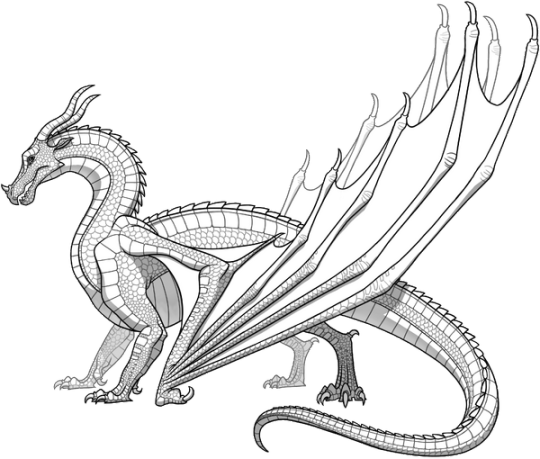
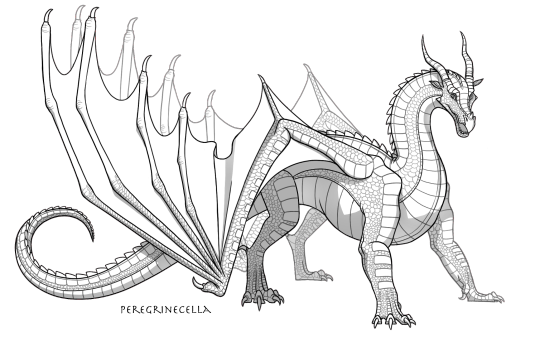
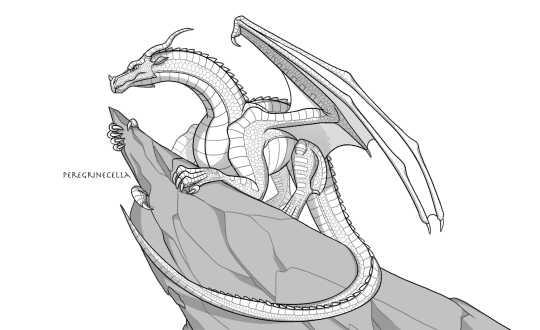
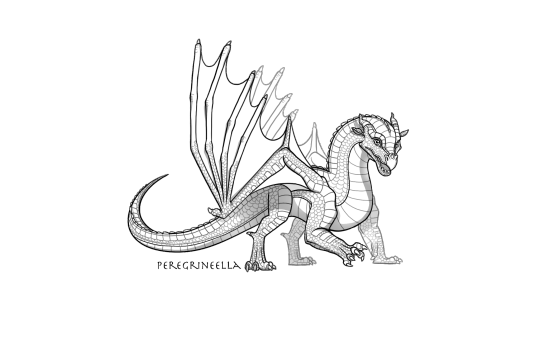
This is a SkyWing, or sky dragon. They have red, orange, orange-gold, or red-gold scales. They can breathe fire, have the largest and fastest wings, and if born from a twin egg, one twin will have too much fire, to the point of having burning hot and fiery scales that burn those who touch them (except blood-red egg-born MudWings) and a twin with too little fire, who can only produce smoke and is paler than most SkyWings. SkyWings live in the mountains of the Sky Kingdom, and have prey such as goats, hawks, and sheep. They have also grown crops. They have had a lot of scary, bloodthirsty queens, who had an area built where gladiators and prisoners wouod fight, sometimes (most of the time) to the death. It was used once as a gallery for art, and later as a hospital for wounded veterans. They can have names such as:
Birds of prey: Hawk, Eagle, Kestrel...
Red/orange birds: Cardinal, Thrush...
Colors: Vermillion, Scarlet, Carmine...
Red/Orange/Gold gems: Ruby, Garnet, Jasper, Tourmaline...
Rocks and Mountain Phenomena: Cliff, Avalanche...
Flying: Soar, Tailwind
Fire: Flame, Firestorm...
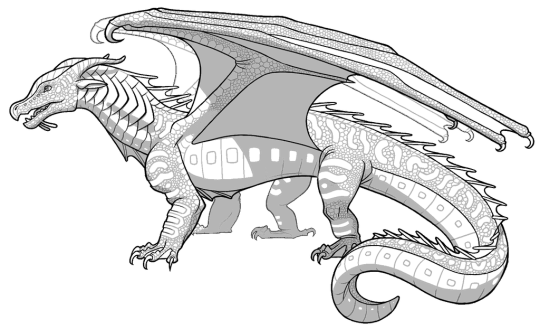
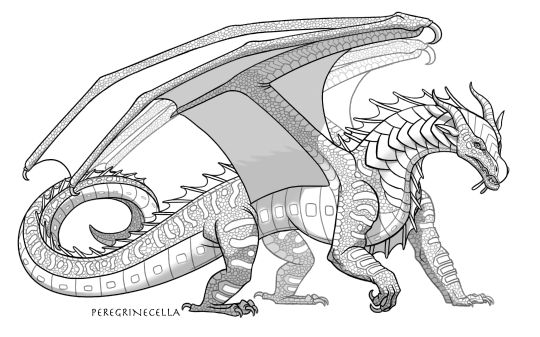
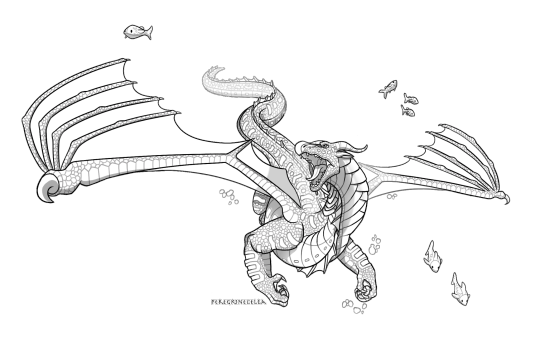
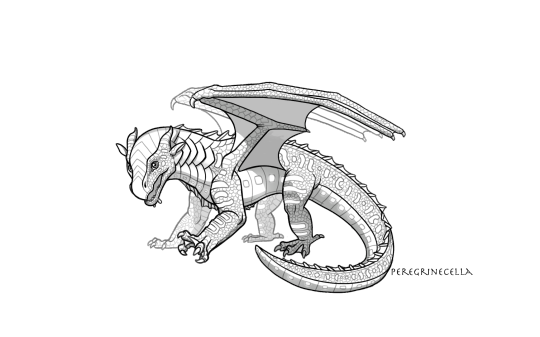
This a SeaWing, or sea dragon. They have blue, blue-green, teal, gray-blue, gray-green, or even indigo scales. They have their own underwater language called Aquatic, where they use the lihht-up scales on their body to talk, using different flashes and scale combinations to speak with each other. They have gills and lungs, are able to live underwater and on land, and their royal family has animus magic (animus are dragons who are born with magic that can do almost anything, except bring back the dead). They also have large tails, which are powerful. Their prey includes sharks, octopi, squid, crabs, lobsters, tuna, salmon, and any other marine life (except dolphins). They live in the Sea Kingdom, which is the Bay of a Thousand Scales (a lot of islands) and the ocean. They had two palaces, one underwater, and one on a hidden island. They can have names such as:
Sea animals: Turtle, Barracuda, Snail, Auklet, Orca...
Sea Plants: Kelp, Anemone, Coral...
Ocean Phenomenon: Current, Riptide, Whirlpool
Ocean Weather: Tempest, Tsunami
Colors: Indigo, Cerulean...
Bodies/Forms of Water: Lagoon, Droplet...
Blue/Green/Ocean gems: Sapphire, Pearl...
#honeycomb thoughts#platonic yandere marvel#yandere platonic marvel#platonic yandere xmen#🐉wings of fire au#🍷the heir of evil🐉 au#���tiny talons🐉 au#🥚tiny heir❄ au#🥚tiny sting🐝 au#🍯honey and venom🧪 au
9 notes
·
View notes
Text
🐉 Introduction to the Komodo Dragon 🐉

The Komodo dragon (Varanus komodoensis) is the largest living species of lizard. These incredible reptiles are native to a few Indonesian islands, including Komodo Island. Known for their impressive size and predatory skills, Komodo dragons are fascinating creatures of the animal kingdom. 🌍 Habitat and Distribution 🌍 Komodo dragons are found primarily on the Indonesian islands of Komodo, Rinca, Flores, Gili Motang, and Padar. These islands offer a range of habitats from tropical savannas to forests. The dragons thrive in hot, dry environments and often roam across large territories in search of food. 📏 Size and Appearance 📏 Komodo dragons are the largest lizards on Earth, with some individuals growing up to 10 feet (3 meters) in length and weighing over 150 pounds (70 kilograms). They have rugged, durable skin with distinct scales, powerful limbs, and a long, muscular tail. Their forked tongues are constantly flicking, helping them sense their environment. 🍖 Diet and Hunting Skills 🍖 These apex predators have a varied diet that includes deer, pigs, and even large water buffalo. Komodo dragons are known for their remarkable hunting skills, which involve stealth, strength, and a deadly bite. They possess venomous glands that release toxins capable of causing shock and blood loss in their prey. 👶 Reproduction and Life Cycle 👶 Female Komodo dragons lay about 20 eggs, which they bury in the ground. The eggs incubate for about 8 months before hatching. Young Komodo dragons are vulnerable to predators, including adult Komodo dragons, so they often take to the trees for safety until they grow larger and stronger. 🦕 Evolutionary History 🦕 Komodo dragons are believed to have evolved in Australia before spreading to Indonesia. They are part of the monitor lizard family and have ancient origins dating back millions of years. Their unique adaptations have allowed them to become formidable predators in their environment. 🏞️ Conservation Status 🏞️ Komodo dragons are listed as vulnerable by the International Union for Conservation of Nature (IUCN). Habitat loss, natural disasters, and human activities pose significant threats to their populations. Conservation efforts are underway to protect these magnificent reptiles and their habitats. 🏆 Fun Facts 🏆 Komodo dragons can run at speeds of up to 13 miles per hour (20 kilometres per hour). They have an excellent sense of smell, capable of detecting carrion from miles away. Despite their fearsome reputation, Komodo dragons are known to play an essential role in their ecosystems by controlling prey populations.
#animal#planet#nature#wildlife#plants#animals#forest#nature photography#naturelovers#photos#komodo dragon
6 notes
·
View notes
Text
Character Intro: Pseudologos (Kingdom of Ichor)









Nicknames- The False God, The Dark Deceit by the people of Olympius
Father by Dolos
Sue by Elpis
Grandfather by Pheme
Age- 70 (immortal)
Location- Olympia, Olympius
Personality- He's very observant with a strong attention to the most minute of details. He's also narcissistic, highly manipulative, selfish, uneasily fooled, as well as egomaniacal. There's only a few beings he genuinely cares about. He has many girlfriends.
He has the standard abilities of a god. As the god of lies his other powers/abilities include truth sense, vocal mimicry, lie proficiency, criminology mastery, telepathy (is able to read minds), fraud inducement (can manipulate others to lie), shapeshifting (his skill is on par with Empusa), being able to create a variety of auditory, visual, & sensory illusions, as well as being able to communicate with/shapeshift into animals associated with trickery- like rats, wolves, snakes, jackals, hyenas, weasels, foxes, coyotes, monkeys, crocodiles, etc...
Pseudologos' primary abode is his cliffside mansion in the state of Olympia. The mansion is built out of adamantine glass, white marble, & black onyx. There are a lot of streakless windows and glittering chandeliers while the flooring is white marble with Imperial Gold accents. The interior design is cool, modern, & sleek with a variety of artwork, photography, and sculptural pieces with leather furniture, & metal, lucite, Imperial Gold, jade, and obsidian furniture pieces. He has a LARGE garage that houses his collection of luxurious sports cars. Pseudologos also owns a beach house on Shimmering Tail Island and an apartment at Bolt Towers, located in the Skyline neighborhood of New Olympus. He also owns a yacht called Olympian.
He has an animal companion- a dragon named Nyroxion. He's the second oldest & fourth largest dragon in all the realms, widely known as "The Black Beast." After Xuvra, Nyroxion is the most fiercest and aggressive. He's primarily covered in black scales while his belly scales & spinal plates are a dark blood red. The dragon has black horns, claws, and crests with dark red eyes & black wings with dark red wing membranes. Nyroxion is usually Pseudologos' mode of transportation. Dragon and rider have an unbreakable bond.
He's fluent in all the languages spoken in Olympius.
Members of Pseudologos' immediate family includes his younger brother Logos (god of stories), his son Dolos (god of deception & treachery), his niece Eikono (goddess of iconography & literature), his daughter-in-law Elpis (goddess of hope), and his granddaughter Pheme (goddess of fame).
His breakfast is usually prepared & cooked by his personal chef- a mountainous centaur named Montague (called Monty for short). Some of Pseudologos' favorites includes almond poppy seed belgian waffles topped with peach compote, cinnamon & cardamom crêpes topped with powdered sugar, baked florentine egg white omelets, and tropical fruit sorbets.
His favorite "snacks" are smoking cigarettes & cigars. Pseudologos treats himself with buying a few of the most expensive cigars at Ygró Veloúdo- the wine bar/premier smoking room owned by Agathodaemon (Daemon) (god of vineyards, grainfields, & luck). At 1.3 million drachmas a pop, the cigar is meticulously filled with rare tobacco sourced from the Underworld infused with a prestigious black pomegrante cognac, wrapped gracefully with a gold leaf, and is secured by a band with dazzling diamonds totaling 5 carats. He also partakes in weed & lotus dust.
He's proficient at forging signatures.
Pseudologos takes great pride in his appearance. In spite of his advanced age, he lives an active lifestyle and is in peak physical shape. His silver gray hair is neatly trimmed, his clothes expertly pressed, & his shoes perfectly polished. Pseudologos is a firm believer of quality over quantity when it comes to his belongings.
A go-to drink for him is a dirty martini. He also likes champagne, red wine, manhattans, whiskey sours, scotch on the rocks, mojitos, negronis, and vesper cocktails. A usual from The Roasted Bean is an olympian sized iced americano.
He doesn't have a close relationship with his brother. Pseudologos hates his younger brother's "greater-than-thou" attitude towards his lifestyle and firmly believes that the moniker of "Olympius' Grandpa" has gotten to Logos' head. He only sees him when there are monthly family dinners hosted by Elpis.
The accumulation of Pseudologos' wealth is one of the best kept secrets in all the realms. There are whispers about his dealings in the black market, but nothing definitive.
His favorite frozen treats are rum raisin ice cream & champagne sorbet.
He has his own crew of stringers that gather intel and photos for the paparazzi. For fun it's rumored that Pseudologos will be in a shapeshifted form as a maintenance worker at the royal palace on Mt. Olympus to gather more information- which is then given to The Oracle Scoop, the tabloid magazine owned by Pheme.
Pseudologos has a few tattoos- a small dagger on the inside of his left wrist, the saying "trust no one" written in Old Greek on the inside of his right wrist, a black widow on his chest, and a bunch of nightshade flowers on his left thigh.
He quite likes his daughter-in-law Elpis. When she visits him, she always brings in a fresh bouquet of flowers. They'll go to the beach to surf & afterwards Pseudologos will enjoy Elpis' homemade smoothie bowl, the blueberry açaí one being his favorite. He doesn't mind the jokes she makes at his expense and thinks that she is too good for his son.
For lunch Monty will prepare Pseudologos' favorite- grilled snapper and asparagus with herb-caper vinaigrette. If he's with a date, he'll dine out, often at The Crown. From the menu he likes the steamed miso custard with mushrooms & soy dressing, herb crêpes with olives and spinach, & grilled garlic crusted oysters with beluga caviar.
Pseudologos' relationship with his son has always been tense. He honestly can't remember the last time he said "I love you" to Dolos or showed any sort of physical affection towards him. Pseudologos is proud of the fact that he taught his son about the harsh truths of the world. That for deities like them, their worth is made, not given. He also refuses to tell Dolos anything about his biological mother.
His all time favorite dessert is baked alaska.
Pseudologos loves buying gifts for his girlfriends, daughter-in-law, & granddaughter.
He has recently released his signature cologne called Mystique. The spicy fragrance has notes of violet leaf, cyclamen, amber, bitter orange blossom, orris, & narcissus. Another notable feature is the black obsidian bottle with purple jade accents. A 8.5 oz/250ml bottle sells for 1,300 drachmas. The release day for Mystique happened at a Pithos Department Store in the Skyline neighborhood.
Pseudologos adores his granddaughter- calling Pheme "My little diamond." They keep in touch through text all the time and they visit each other often. He was one of the financial backers involved in starting up her Diamond Ave. fashion brand. When they spend time together they'll go to the spa, go shopping, & dine at a restaurant. At times their relationship has been tested- due to Pseudologos' constant flirting with Pheme's friends. Lately, he's been trying to let up on that.
A guilty pleasure for him is a wagyu, foie gras, & black truffle burger that Monty makes.
He has quite the social media presence on Fatestagram.
Throughout his immortal life he's been married well over a hundred times! In the pantheon Pseudologos is infamously known as "The Collector of Wives." He's been engaged even more times. Pseudologos rejects the notion of true love, but understands the want and desire to have a warm body close to him at night. Now, he keeps things casual with many girlfriends of many creeds. His long-time girlfriend is Lycana (Titaness of lycanthropy).
Pseudologos has also propositioned Aisa (goddess of lot & fate) as well as Apate (goddess of fraud & deception). Aisa rejected the offer while Apate hasn't given him an answer yet. He does feel a little guilty about the latter- seeing how Apate is his friend's daughter and that she used to work closely with Dolos.
In the pantheon he's friends with Erebus (god of darkness), Astrape (goddess of lightning), Empusa (goddess of shapeshifting), Bronte (goddess of thunder), Hysminai (goddess of fighting & combat), Kydoimos (god of uproar & battlefield confusion), Clymene (Titaness of fame & renown), and Hyperion (Titan god of heavenly light).
Pseudologos was the official mentor to Aplistos (god of avarice).
He met Lycana's daughter Lykos (goddess of wolves) briefly a few weeks ago. Pseudologos doesn't have much of an opinion about her.
His carnal appetites rivals that of Zeus (god of the sky, thunder, & lightning). Pseudologos has a "little black book" filled with the names of all his conquests. He has slept with Empusa a few times and has even slept with Gaia (goddess of the earth). An upcoming "event" Pseudologos is looking forward to is a video he's shooting with Philotes (goddess of sex, friendship, & affection) for her adult website. He and Lycana got into a HUGE argument about it.
He broke his only cardinal rule when he said "I love you" to Lycana while they were having sex. When she tried bringing it up a few days later, Pseudologos said that he was high on lotus dust when it happened.
In his free time he enjoys lovemaking, golf, watching TV, tennis, sunbathing, clubbing, going to the casino, playing dominoes, going to the cinema, sky diving, billiards, poker, and going to the opera.
His favorite meal is lamb ravioli with champagne butter and sage.
"The perfect liar is one that no one suspects."
#my oc#oc character#my character#my oc character#oc intro#character intro#oc introduction#character introduction#modern greek gods#modern greek mythology#greek myth retellings#greek gods#greek mythology#greek pantheon#greek myths
3 notes
·
View notes
Note
IM SORRY FOR FORGETTING ABT THE FISH FOR YESTERDAY i was cleaning my closet out. :] my back hurts now. so heres a 2 for 1
The whale shark (Rhincodon typus) is a slow-moving, filter-feeding carpet shark and the largest known extant fish species. The largest confirmed individual had a length of 18.8 m (61.7 ft). The whale shark holds many records for size in the animal kingdom, most notably being by far the largest living nonmammalian vertebrate. It is the sole member of the genus Rhincodon and the only extant member of the family Rhincodontidae, which belongs to the subclass Elasmobranchii in the class Chondrichthyes. Before 1984 it was classified as Rhiniodon into Rhinodontidae.
The whale shark is found in open waters of the tropical oceans and is rarely found in water below 21 °C (70 °F).[2] Studies looking at vertebral growth bands and the growth rates of free-swimming sharks have estimated whale shark lifespans at 80–130 years. Whale sharks have very large mouths and are filter feeders, which is a feeding mode that occurs in only two other sharks, the megamouth shark and the basking shark. They feed almost exclusively on plankton and small fishes and pose no threat to humans.
The species was distinguished in April 1828 after the harpooning of a 4.6 m (15 ft) specimen in Table Bay, South Africa. Andrew Smith, a military doctor associated with British troops stationed in Cape Town, described it the following year. The name "whale shark" refers to the fish's size: it is as large as some species of whale. In addition, its filter feeding habits are not unlike those of baleen whales.

The frilled shark (Chlamydoselachus anguineus) also known as the lizard shark, and the southern African frilled shark (Chlamydoselachus africana) are the two extant species of shark in the family Chlamydoselachidae. The frilled shark is considered a living fossil, because of its primitive, anguilliform (eel-like) physical traits, such as a dark-brown color, amphistyly (the articulation of the jaws to the cranium), and a 2.0 m (6.6 ft)–long body, which has dorsal, pelvic, and anal fins located towards the tail. The common name, frilled shark, derives from the fringed appearance of the six pairs of gill slits at the shark's throat.
The two species of frilled shark are distributed throughout regions of the Atlantic and the Pacific oceans, usually in the waters of the outer continental shelf and of the upper continental slope, where the sharks usually live near the ocean floor, near biologically productive areas of the ecosystem. To live on a diet of cephalopods, smaller sharks, and bony fish, the frilled shark practices diel vertical migration to feed at night at the surface of the ocean. When hunting food, the frilled shark curls its tail against a rock and moves like an eel, bending and lunging to capture and swallow whole prey with its long and flexible jaws, which are equipped with 300 recurved, needle-like teeth.
Reproductively, the two species of frilled shark, C. anguineus and C. africana, are aplacental viviparous animals, born of an egg, without a placenta to the mother shark. Contained within egg capsules, the shark embryos develop in the body of the mother shark; at birth, the infant sharks emerge from their egg capsules in the uterus, where they feed on yolk. Although it has no distinct breeding season, the gestation period of the frilled shark can be up to 3.5 years long, to produce a litter of 2–15 shark pups. Usually caught as bycatch in commercial fishing, the frilled shark has some economic value as a meat and as fishmeal; and has been caught from depths of 1,570 m (5,150 ft), although its occurrence is uncommon below 1,200 m (3,900 ft); whereas in Suruga Bay, Japan, the frilled shark commonly occurs at depths of 50–200 m (160–660 ft).

really fond of the frilled shark i think it is lovelhy and a little ugly but that is what makes it lovely
5 notes
·
View notes
Text
Asexual Reproduction of Komodo Dragons
Many species when isolated from other members or when faced with extinction will spontaneously evolve some outlandish trait to help thwart this threat to their survival. The komodo dragon, being a solitary creature on the Endangered Species Red List, has developed one such spectacular ability: parthenogenesis. In this paper I will endeavor to explain what this is, how it works, and how this curious ability affects the species’ chances of recovery or extinction.
Parthenogenesis, also referred to as asexual reproduction, and virgin births, is the ability of a female to reproduce without the aid or presence of a mate. While found in several species of insects, this is a rare trait in members of the vertebrate kingdom (about 70 species). While several species are endangered and even gone extinct, the adaptation of virgin births rarely occurs. There are several speculations and theories surrounding how it has developed in komodo dragons specifically, none of which have been confirmed beyond reasonable doubt, but are fascinating to study nonetheless.
The komodo dragon is the largest reptile of the monitor lizard family, growing up to 3 meters (9.8 feet) and weighing around 70kg (150 lbs) on average in the wild. These venomous monitors are native to Indonesia, Australia, the tropical forests of Asia, Flores Island, and the Komodo Islands; but now are only found in eight small subpopulations, five of which are in the Komodo Islands (Komodo National Park). These endangered reptiles have a sizable selection of prey, as they can and will eat anything from rats to adult buffaloes. They're able to do this due to them being able to run in short sprints at about 20 mph and ambushing their prey, sometimes standing on their hind legs and using their tails for support, then going for the throat using their powerful jaws to rip. Despite these facts there are less than 2,000 mature dragons found in total as of 2019, resulting in their place not only on the IUCN Endangered Species List, but the Red List, alongside other species with a small and/or rapidly shrinking population or natural habitat. Other criteria for the Red List include population distribution and likelihood of extinction vs recovery.
Before we go into why komodo dragons may have developed this trait, we must first understand how it works. As most everyone remembers from their eighth grade health class, sexual reproduction occurs when a sperm is introduced to an egg and fertilizes it, resulting in a fetus or an egg that will eventually hatch. However, asexual reproduction in animals doesn't involve sperm, but one egg fertilizing another. Generally, a female reproducing this way can only birth more females, but here's another way in which these massive reptiles differ from the norm; all offspring created by parthenogenesis are male.
This is because of yet another unique trait, the chromosomes of komodo dragons are reversed. In most species the males have two different chromosomes (XY) and females have an identical set (XX). However komodos are the opposite, the males have the same chromosomes and females have different ones. Because YY cannot create a viable egg, and the females don't have access to an additional X chromosome from a male, they're only able to produce offspring with an XX set (males).
Due to their dwindling numbers more females are relying on parthenogenesis to reproduce, but this causes another issue for preserving the species. Since all offspring from this process are male, there is a shortage of females to birth more dragons, which has led to inbreeding among the few left. This causes several issues in offspring as it does in most species. It's possible this trait developed in order to provide more males for females to procreate with (as they can switch between asexual and sexual reproduction), but this would rely on there being a decent number of unrelated females to avoid the males from the asexual reproduction breeding with a related female. As it stands currently, the species is facing threats from shrinking numbers, rampant inbreeding, habitat loss, and damage to their existing habitat by tourists.
Citations
Komodo Dragon — Global Conservation
Komodo dragon - Wikipedia
Varanus komodoensis (Komodo Dragon)
#job opportunities#ghostwriter#proofreading#editor#educational#lizards#komodo#komodo dragon#endangered species#endangered animals
0 notes
Text


Eggs of the Malaysian Jungle Nymph (Heteropteryx dilatata), one of the largest insect eggs in the animal kingdom! They look like little clay pots ⚱️
0 notes
Text
What Are Shocking Facts?
Shocking facts broaden our perspective and challenge our assumptions about everything from the size of nature to the complex functions of the human body.
Let's explore several amazing facts that will make you question everything you previously believed to be true.

What Are Shocking Facts?
The following are some surprising and shocking facts that might surprise you,
1. Cloud Weight
The average cloud has a mass of one million tonnes. This is because of its density and volume, which let it float in spite of its huge weight.
2. Giraffes and Lightning
Compared to us, giraffes are 30 times more likely to be struck by lightning. Based on confirmed cases and the rather small giraffe population, this statistic was calculated.
3. Identical Twins
The fingerprints of identical twins are not alike. The environment a baby is exposed to while developing in the womb affects its unique fingerprint patterns.
4. Earth’s Rotation
The rate at which the Earth rotates is decreasing, adding roughly 1.8 seconds to a day's duration every century.
5. Brain Function
Phagocytosis is the technique and other shocking facts that your brain uses to continuously eat smaller cells or molecules to stay healthy.
6. Longest Dinosaur Poop
Scientists are learning more about the nutrition of dinosaurs because of the discovery of the largest fossilized dinosaur poo fragment, which is almost 30 cm long.
7. Cosmic Latte
Astronomers have concluded that the typical color of the universe is a beige tint known as "Cosmic Latte."
8. Unique Animal Perception
Animals experience their surroundings differently than humans do because of the way they view time.
9. Tallest Mountains
When compared to Mount Everest, Mauna Kea in Hawaii is technically higher since it is based on the ocean floor.
10. Human Teeth
Since human teeth are the only organ in the body that is incapable of healing itself, dental care is necessary for healthy living.
11. Egg-Laying Animals
Beneath their abdomens, reptiles, and birds are examples of animals without belly buttons. This is due to the fact that, like mammals, they lack an umbilical cord.
12. Mr. Potato Head
A major point in the history of marketing was reached when this iconic toy became the first to be promoted on television.
13. Boanthropy
This is a psychological condition in which an individual acts and thinks like an ox or cow.
14. Alligators and Manatees
Manatees and alligators have an unusual relationship in the animal kingdom; alligators will give manatees the right of way if they are swimming close to one another.
15. Canned Baked Beans
Despite their name, canned baked beans are actually stewed rather than baked.
continue >>>
1 note
·
View note
Text
Insects - Thinking Hats
White Hat
Taxonomy
Insects are a class of the Arthropoda phylum. They are actually the largest class in this phylum, with the Arthropoda phylum being one of the largest phylum under the animal kingdom.
Insects are classified as invertebrate multi-cellular organisms with a hard exoskeleton, segmented body, six legs, and generally one or two pairs of wings.
Insects generally have 3 segments: head, thorax, and abdomen.
Orders of insects:
Orthoptera - Grasshoppers, crickets and bush-crickets
Phasmida - stick-bugs
Plecoptera - stone flies
Dermaptera - earwigs
Dictyoptera - Cockroaches, termites and mantids
Embioptera - web-spinners
Grylloblattaria - rock crawlers
Mantophasmatodea - heel-walkers
Zoaptera - Zorapterans
Ephemeroptera - Mayflies or up-wing flies
Odonata - Dragonflies and damselflies
Hemiptera - true bugs
phthiraptera - Sucking and biting lice
Psocoptera - Booklice and barklice
Thysanoptera - thrips
Coleoptera - beetles
Diptera - true flies
Hymenoptera - ants, bees, and wasps
Lepidoptera - butterflies and moths
Mecoptera - scorpion flies
Megaloptera - alderflies
Neuroptera - lacewings
Siphonaptera - fleas
Raphidioptera - snakeflies
Strepsiptera - twisted wing flies
Trichoptera - Caddisflies/sedge flies
Life cycle and metamorphosis
Insects lay eggs to produce larvae. These larvae will go on to shed their exoskeleton several times over until adulthood. Some juvenile insects will change slightly after each moult and are referred to as nymphs doing this time. Other juvenile insects will only undergo large changes in their final moult (e.g: butterflies, moths). These insects often have an extra phase known as the pupa phase.
simple metamorphosis - the adult insect and juvenile insect differ very little in appearance, often the only thing separating the two is their size.
Complete metamorphosis - adult insects and their juvenile counterpart differ greatly in appearance. They often live in different habitats, and may have very different behaviour.
Dragonfly metamorphosis
Dragonflies undergo simple metamorphosis. First, females will lay eggs in gentle still water. The dragonfly larvae will hatch underwater and is actually where they will spend most of their life. They will spend their time as larvae for up to two years. When the larvae starts reaching its final moults, they will start to live on the edge of the water and learn to breathe air. Finally the juvenile will moult for the final time and emerge from their old shell body as a dragonfly. They will then live as a dragonfly for six months before dying.
Periodical Insects
some insects have a fixed life cycle length. In these species, adults appear at one time to reproduce for once in their lives and die. The larvae will often only hatch or reach maturity years later.
Cicadas are the most famous example of this and have the longest life cycle of insects. The nymphs will live underground and feed off of the roots of trees. Finally, after 17 years, they will emerge out of the ground. Over the next few weeks the cicadas will mate, lay their eggs, and die; repeating the cycle once more.
The may beetle is another example. Their life cycle lasts either 3 years or 4-5 years depending on the region.
Winter
Different species of insects have different ways of combating winter. One such way is through migration (eg: the monarch butterfly).
Some insect species will go through the process of 'overwintering.'
Many insects successfully pass the winter as immature larvae. The protection of heavy covers of leaf litter or similar shelters protect the woolly bear caterpillar, while other insects replace the water in their bodies with glycerol, a type of antifreeze! Some grubs simply burrow deeper into the soil to escape the cold.
Not many insects are active in the winter, but the nymphs of dragonflies, mayflies and stoneflies live in waters of ponds and streams, often beneath ice. They feed actively and grow all winter to emerge as adults in early spring.
Lesser numbers of insects lay eggs which survive the winter. The most prominent insects in this category are Praying Mantids, and the destructive Corn Rootworms also engage in this strategy.
Some insects overwinter in the pupal stage, then emerge as adults in the spring. Moths in the Silkworm Family, Saturniidae, may be found attached to food plant branches as pupae in the winter.
Insects also hibernate as adults. Ladybirds are a common example. Many large wasps seek shelter in the eaves and attics of houses or barns. Tree holes, leaf litter, and under logs and rocks are common shelters for overwintering adult insects. The Mourning Cloak Butterfly is usually the first butterfly that is noticed in the Spring, and this is because it hibernates in tree holes or other shelters during the winter. As in some insect larvae, it reduces the water content of its body, and builds up glycerol which acts as an antifreeze. Honey bees stay in hives during the winter, and form clusters when temperatures fall, vibrating their wings in order to create heat.
More info
They are one of the most successful group of animals in the world, with their populations far exceeding that of any other land fauna.
They are also the most diverse group of animals on Earth, with over a million identified species.
Insects have adapted to serval different climates, and have adapted to every land and freshwater habitat.
They play a crucial role in ecosystems as pollinators, decomposers, and food sources for other animals.
They have a complex social structure in some species, like bees and ants.
Their exoskeletons provide protection and support
0 notes